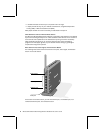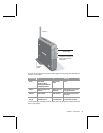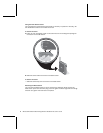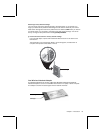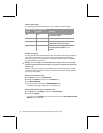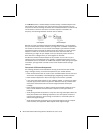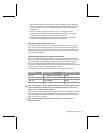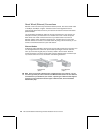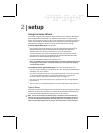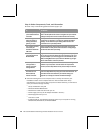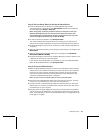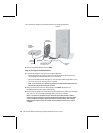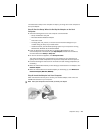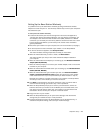
10 Microsoft Broadband Networking Wireless Notebook Kit User’s Guide
About Wired (Ethernet) Connections
Ethernet is the most commonly used wired network protocol, with data transfer rates
of 10 Mbps, 100 Mbps, or higher. The base station’s auto-negotiation feature
automatically determines the rate of your network connections and uses the fastest
speed available.
You will probably use Ethernet cables to connect some devices in your network, for
example to connect your base station to a modem and to one or more computers.
Each device that makes a wired connection to your base station must have an
Ethernet adapter, which provides an Ethernet port. A modem and up to four other
Ethernet devices can connect to the base station. By using hubs or switches, you can
connect more Ethernet devices to your base station.
Ethernet Cables
An Ethernet cable resembles a phone cord, but has larger connectors at each end. You
can distinguish Ethernet cable from phone cable by the larger connector size and,
often, by the number of gold pins (or contacts) visible in the connector. Ethernet
connectors (RJ-45) commonly contain eight contacts, whereas phone connectors (RJ-
11) contain either two or four, as shown in the following illustration.
RJ-45 Ethernet
(8 pins)
RJ-11 Telephone
(4 pins)
Note There are two types of Ethernet cable, “straight-through” and “crossover”. You can
use either type when you connect devices to the Microsoft base station. For other Ethernet
connections that you establish on your network, a specific type of Ethernet cable might be
required. For more information about the types of Ethernet cable, see the Broadband
Network Utility Help.



